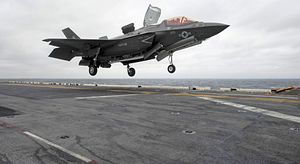As argued in a previous column, the article on Military Technological Superiority by Andrea and Mauro Gilli has potentially revolutionary implications for how we think about the balance of military power in East Asia. The previous column detailed some of their claims (Franz-Stefan Gady also discussed these issues with the authors), while this column tries to open avenues of productive critique.
The Gillis clearly have a strong case regarding very high tech defense systems that draw from a wide swath of the industrial base. But much of the technological military diffusion that scholars (and practitioners) care involves technologies that are considerably less difficult to master. For example, it’s not obvious that the Gillis have much to offer (in this article) about the diffusion of cruise missile or ballistic missile technology, both of which are of considerable concern to the international community. These kinds of system are available to a wide range of industrialized countries, and their diffusion seems to depend more on what Dennis Gormley describes as “narrative” and “norms.”
Although the Gillis discuss the German adoption of the “dreadnought” form from the United Kingdom, the conversation lacks an international flavor that would have offered helpful context. The innovations that produced HMS Dreadnought were essentially “architectural” in that they involved the repurposing of a variety of pre-existing technologies, rather than (as is the case with stealth) cutting edge research. In the case of battleships, the United Kingdom was not even the first country to develop the “all-big-gun” concept; Japan and the United States arrived at the idea first, and simply built their ships more slowly than the British. A better modern analogue for dreadnought construction might be precision-guided munitions, which similarly involve the assembly and reconfiguration of a range of pre-existing tech, and which China seems to have mastered more effectively than stealth.
In line with their focus on technology, the Gillis don’t discuss legal barriers to diffusion. Of these three come to mind: Export controls, intellectual property protection, and anti-proliferation treaties. The last exists because technological barriers to diffusion aren’t high enough, requiring the imposition of legal restrictions. Export controls prevent voluntary diffusion by private firms and by third-party countries, and are generally designed to prevent countries like China and Russia from accessing advanced U.S. defense technologies. Intellectual property law has broader application, protecting a wide range of technological processes from improper acquisition. This likely prevents second tier countries such as China from catching up with first tier countries like the United States, as it limits access to key elements of the industrial base needed for emulation.
Finally, Gilli and Gilli do not discuss at length the impact of the arms trade on the diffusion of military technology. Even great powers trade weapons, and increasingly the trade in weapons also involves the (legitimate) trade in advanced weapons technology. This kind of technology transfer, involving voluntary cooperation in industrial production, may well work more effectively at diffusing military technology than the cyber-espionage that Western analysts have fixated upon.
In short, some types of diffusion happen (or don’t happen) because of the difficulty of mastering the integration of particularly sophisticated technologies, and some types of diffusion happen (or don’t happen) because countries make discretionary decisions to employ national resources in particular ways. While it seems that stealth falls into the former category, it is not at all obvious that dreadnought battleships (or flat decked aircraft carrying ships) belong there; cruise missiles, ballistic missiles, chemical weapons, and even nuclear weapons quite clearly fall into a category we might call “discretionary” diffusion.
































